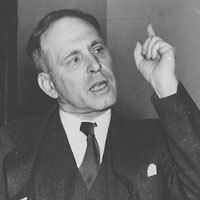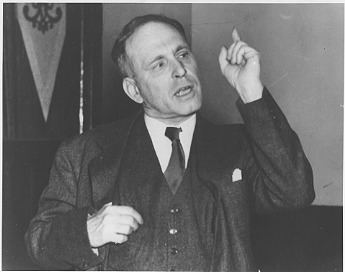Name Roger Baldwin | Role Author | |
Books Civil liberties and industrial conflict Parents Lucy Cushing Nash, Frank Fenno Baldwin Similar People Crystal Eastman, Norman Thomas, Jane Addams, Felix Frankfurter, Peter Kropotkin | ||
Roger Nash Baldwin (January 21, 1884 – August 26, 1981) was one of the founders of the American Civil Liberties Union (ACLU). He served as executive director of the ACLU until 1950.
Contents

Many of the ACLU's original landmark cases took place under his direction, including the Scopes Trial, the Sacco and Vanzetti murder trial, and its challenge to the ban on James Joyce's Ulysses. Baldwin was a well-known pacifist and author.

Early years
Roger Nash Baldwin was born in Wellesley, Massachusetts to Frank Fenno Baldwin and Lucy Cushing Nash.
He earned his bachelor's and master's degrees at Harvard University; afterwards, he moved to St. Louis on the advice of Louis D. Brandeis. There he taught sociology at Washington University, worked as a social worker and became chief probation officer of the St. Louis Juvenile Court. He also co-wrote Juvenile Courts and Probation with Bernard Flexner at this time; this book became very influential in its era, and was, in part, the foundation of Baldwin's national reputation.
Career
Baldwin was a member of the American Union Against Militarism (AUAM), which opposed American involvement in World War I, and spent a year in jail as a conscientious objector rather than submit to the draft. After the passage of the Selective Service Act of 1917, Baldwin called for the AUAM to create a legal division to protect the rights of conscientious objectors.
On July 1, 1917, the AUAM responded by creating the Civil Liberties Bureau (CLB), headed by Baldwin. The CLB separated from the AUAM on October 1, 1917, renaming itself the National Civil Liberties Bureau, with Baldwin as director. In 1920, NCLB was renamed the American Civil Liberties Union with Baldwin continuing as the ACLU's first executive director.
As director, Baldwin was integral to the shape of the association's early character; it was under Baldwin's leadership that the ACLU undertook some of its most famous cases, including the Scopes Trial, the Sacco and Vanzetti murder trial, and its challenge to the ban on James Joyce's Ulysses. Baldwin retired from the ACLU leadership in 1950. He remained active in politics for the rest of his life; for example, he co-founded the International League for the Rights of Man, which is now known as the International League for Human Rights.
In St. Louis, Baldwin had been greatly influenced by the radical social movement of the anarchist Emma Goldman. He joined the Industrial Workers of the World.
In 1927, he had visited the Soviet Union and wrote a book, Liberty Under the Soviets. Originally, at the beginning of the ACLU, he had said, "Communism, of course, is the goal." Later, however, as more and more information came out about Joseph Stalin's regime in the Soviet Union, Baldwin became more and more disillusioned with Soviet-style communism and called it "A NEW SLAVERY" (capitalized in the original). He condemned "the inhuman communist police state tyranny."
In the 1940s, Baldwin led the campaign to purge the ACLU of Communist Party members.
In 1947, General Douglas MacArthur invited him to Japan to foster the growth of civil liberties in that country. In Japan, he founded the Japan Civil Liberties Union, and the Japanese government awarded him the Order of the Rising Sun. In 1948, Germany and Austria invited him for similar purposes. He was elected a Fellow of the American Academy of Arts and Sciences in 1951.
Later years
President Jimmy Carter awarded Baldwin the Medal of Freedom on 16 January 1981.
Death and legacy
Baldwin died of heart failure on August 26, 1981 at Valley Hospital in Ridgewood, New Jersey.
